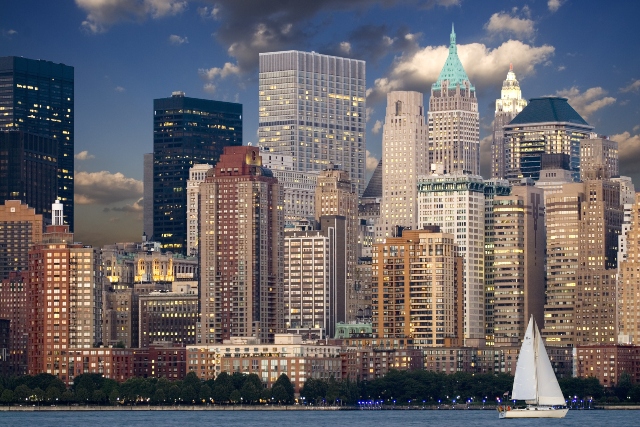
As reported by Nikkei Asia, "office demand has fallen around the world as more people work from home and businesses accelerate job cuts to cope with slow growth," adding that, "at the end of March, vacancy rates hit the highest levels since the global financial crisis of 2008 in 10 of 17 major cities."
Not only office spaces but hotels and other commercial facilities are also experiencing a decline in demand, leading to lower occupancy rates. This situation has raised concerns about the potential financial instability resulting from troubled real estate loans, the outlet noted further:
In fact, some big investors are already pulling out of the hotel business in the U.S. Park Hotels & Resorts, the owner of Hilton San Francisco Union Square, announced on June 5 it had stopped making mortgage payments on the property, surrendering the hotel to the lender. The amount of liabilities involving Hilton San Francisco and another property totaled $725 million.
Park Hotels & Resorts CEO Thomas Baltimore blamed the default on weak demand for business trips and conferences caused by corporate restructuring. The office vacancy around the hotel is at a "record high" as San Francisco has seen a "lower return to office than peer cities," Baltimore said.
According to CBRE, a commercial real estate service provider, the vacancy rate in the San Francisco area reached nearly 20% by the end of March. While IT companies like Salesforce and Twitter (now X Corp) have contributed to the market's resilience, demand has been decreasing since autumn 2022 due to workforce reductions by many IT companies in response to sluggish growth.
The office market slowdown is not limited to the United States, as other regions are also experiencing similar challenges. In Hong Kong, the ratio of vacancies to available rental space has exceeded 15%, reaching a record high. This is primarily due to mainland Chinese companies reducing their office space and U.S. and European businesses relocating to Singapore and other locations, the outlet noted further.
Meanwhile, Tokyo has a relatively lower vacancy rate compared to other areas, but it is approaching 5%, a level that is considered a threshold between expansion and contraction in the market, the report said.
Globally, the office vacancy rate stood at 12.9% by the end of March, slightly below the 13.1% recorded during the 2009-2010 period following the global financial crisis, as reported by CBRE. The decline in office occupancy is not isolated, as city centers have experienced reduced foot traffic, leading to decreases in operating rates for shopping malls, hotels, and other commercial facilities, Nikkei Asia said.
Financial regulators are growing increasingly concerned about the potential repercussions of the sluggish demand for office space on the stability of the financial system. During a hearing before the U.S. House Financial Services Committee in May, Michael Barr, the vice chair for supervision at the Federal Reserve, expressed unease regarding the fragility of the urban office market. He emphasized that Fed officials are closely monitoring the risks associated with commercial real estate.
The total amount of loans provided by U.S. commercial banks to owners of office buildings and other commercial properties has reached approximately $3 trillion. Notably, around 70% of these loans come from small and midsize lenders, the outlet reported.
The midsize banks, benefiting from the influx of cash resulting from monetary easing measures, directed a significant portion of their funds into the commercial real estate sector. The increasing value of property as collateral further fueled their interest in this market, the report said.
"But excessive real estate lending could drive banks to the wall. Prices of U.S. commercial properties fell 15.3% in April from a year earlier, the largest drop since September 2009, according to U.S. research company Green Street," said Nikkei Asia. "Many properties have become less profitable as tenants moved out, while it has become costlier for businesses to raise new funds."
Sources include:
Please contact us for more information.
















